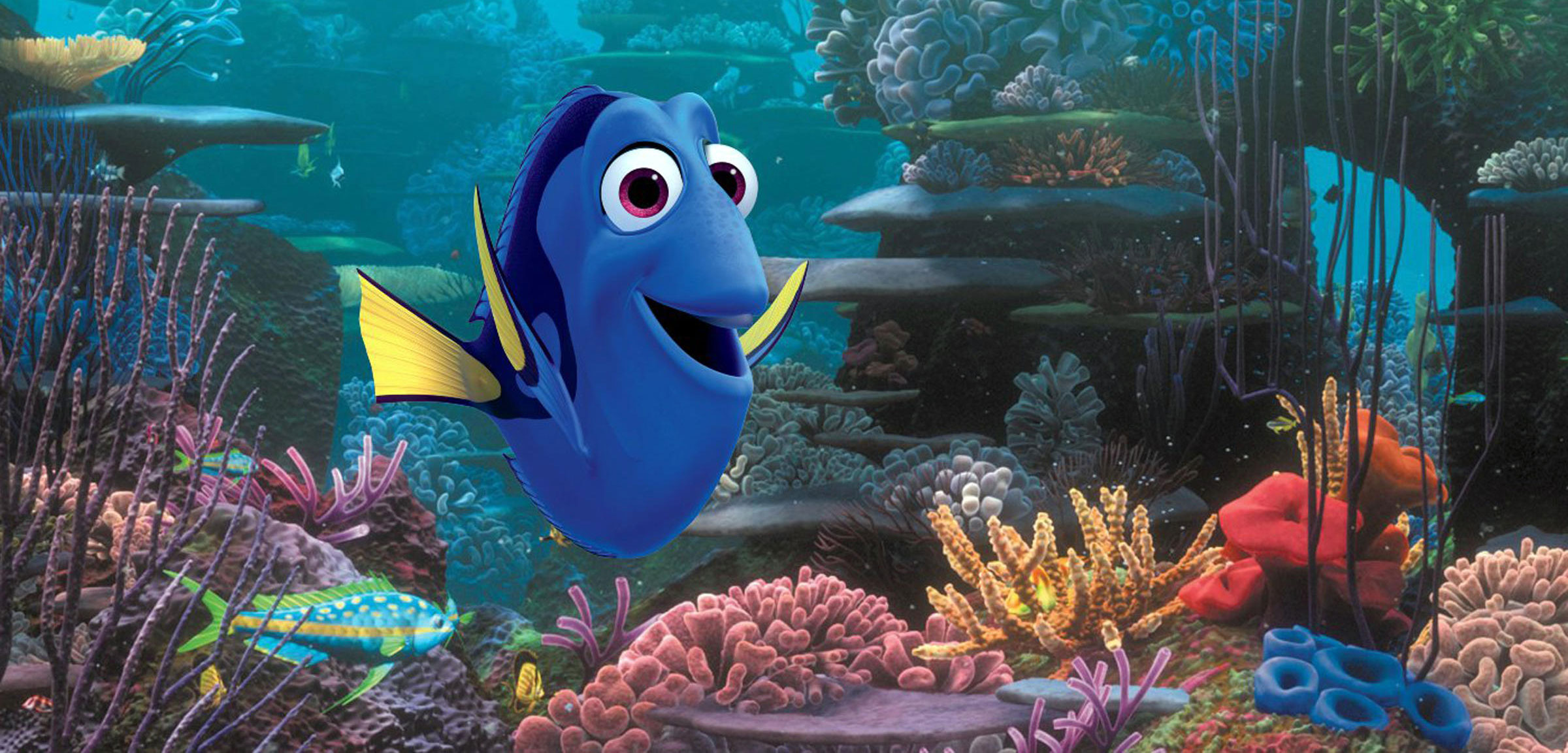Rumors of Dory’s Demise Were Greatly Exaggerated
Blue tangs just keep swimming, swimming, swimming.
Article body copy
It wasn’t supposed to be controversial. But in the months leading up to Pixar’s 2016 release of Finding Dory, the animated movie about a cute blue fish with a memory problem, people started to worry that the film might harm wild fish populations.
The thinking went like this: after being charmed by Ellen DeGeneres’s portrayal of Dory, a talking blue tang, hordes of viewers would rush to buy the fish as pets. But with no captive-bred option available, the spike in demand would accelerate the unregulated and often destructive collection of the tropical marine species. On her talk show, DeGeneres even went so far as to implore viewers not to buy blue tangs.
Media publications exacerbated those concerns as scientists raced to figure out how to breed blue tangs in captivity before the movie came out—an effort that was defined by frustration and setbacks.
But it now appears that worries about the movie’s potential to create a conservation catastrophe were likely unfounded. A new study led by Diogo Veríssimo, a social scientist at the University of Oxford in England, found no evidence of a spike in demand for blue tangs in the weeks after the movie came out. Instead, the film may have actually increased awareness about the fish in ways that could be beneficial.
For years, Veríssimo has been interested in the ways that mass media can influence how people act toward nature. The 1942 Disney movie Bambi, for instance, has been linked with reducing hunting in the United States. And research has shown that TV shows and movies about dogs—such as Lassie and 101 Dalmatians—may have shaped preferences for specific dog breeds.
But other assumptions appeared less conclusive upon further probing. In a 2017 study, Veríssimo reported that contrary to popular belief, the Harry Potter franchise did not lead to a rise in pet owl purchases in the United Kingdom. And although media outlets purported that the movie Zootopia led to an increased demand for fennec foxes, Veríssimo couldn’t find any evidence to back up the claim.
Skepticism then extended to what had become known as the Nemo effect: the belief that a surge in clownfish sales followed the 2003 release of Finding Nemo, the prequel to Finding Dory that starred a talking clownfish. In the months after it hit theaters, the media grasped onto the idea that pet shop owners were seeing their sales of clownfish skyrocket. This belief was echoed so often that it became conventional wisdom—until Australian researchers reported in 2017 that there was little evidence to support it.
With those case studies in mind, Veríssimo began to wonder if Finding Dory negatively impacted blue tangs as some media outlets had claimed.
To find out, Veríssimo and his colleagues analyzed US import data for blue tangs each month between 2015 and 2016, both before and after Finding Dory came out. Results showed no sign that ornamental fish traders increased imports of blue tangs in anticipation of greater demand from the movie and no sign that people bought more blue tangs after seeing the movie. In fact, imports declined after the movie’s release.
Still, more than 1,800 species of ornamental fish, including blue tangs, are imported into the United States every year, says Matt DiMaggio, an aquaculture researcher at the University of Florida’s Tropical Aquaculture Laboratory who was not involved with the study. And while data on the health of wild fish populations and industry practices remains scarce, DiMaggio says movies like Finding Dory can help bring awareness to those issues and to the progress researchers are making. Just a few months after Finding Dory came out, DiMaggio’s team finally succeeded in raising blue tangs in captivity. “We’ve come a long way in the last three or four years,” he says.
There’s also a sign that Finding Dory altered behavior positively. In the week after the movie was released, Veríssimo found that the number of Google searches for blue tangs doubled.
The finding suggests that movies about animals might raise the profiles of previously unfamiliar species while educating people about their conservation needs, he says. That’s especially important for movies that feature marine conservation issues, he adds, which are distant from most people’s lives.
The new results emphasize the need for conservationists to think carefully about the messages they want to communicate to the public, Veríssimo says. With limited air time to talk about nature and biodiversity issues, he says, “we need to focus on things that are really important so we can get people to care and act about things that really matter.”

